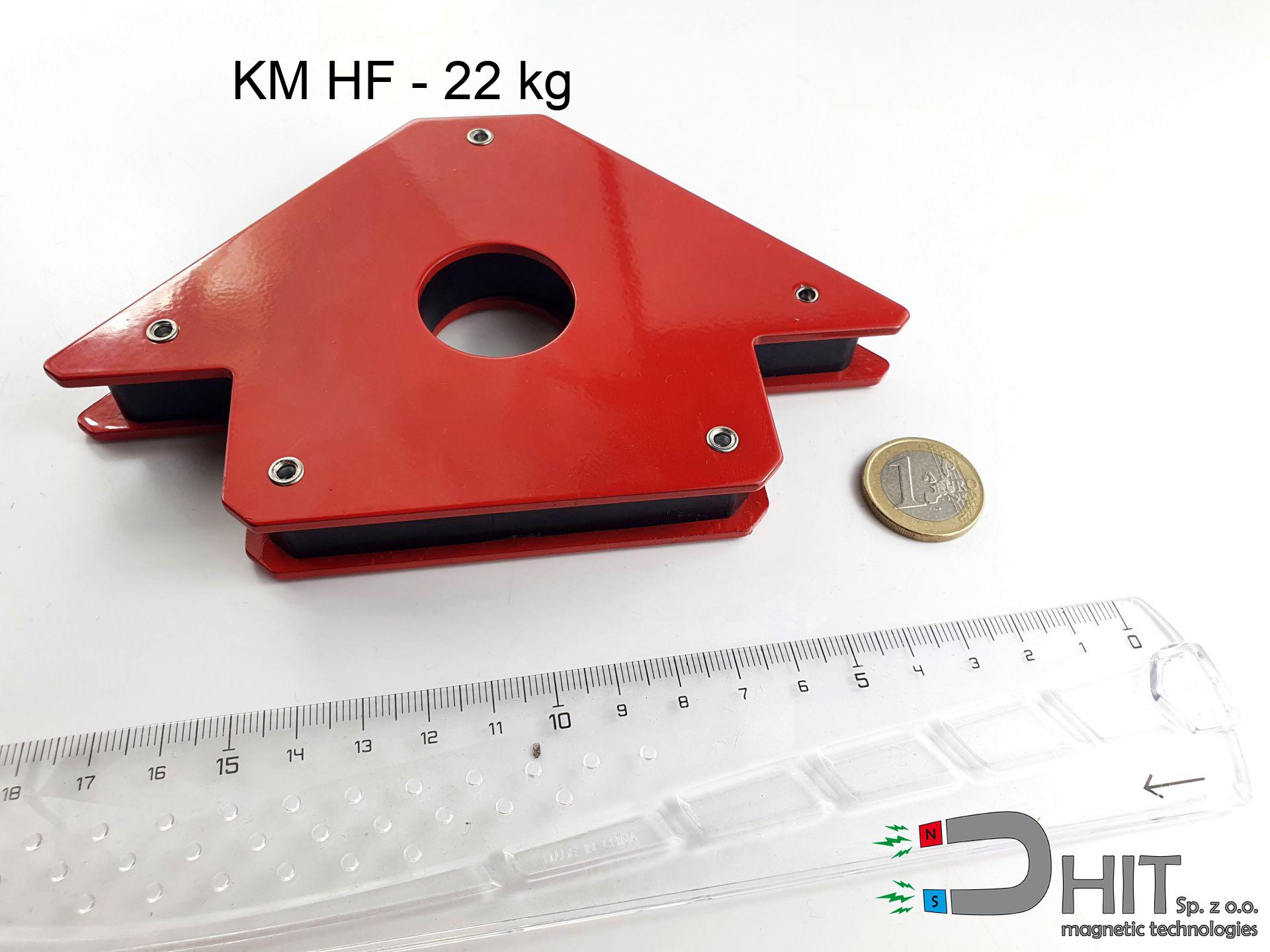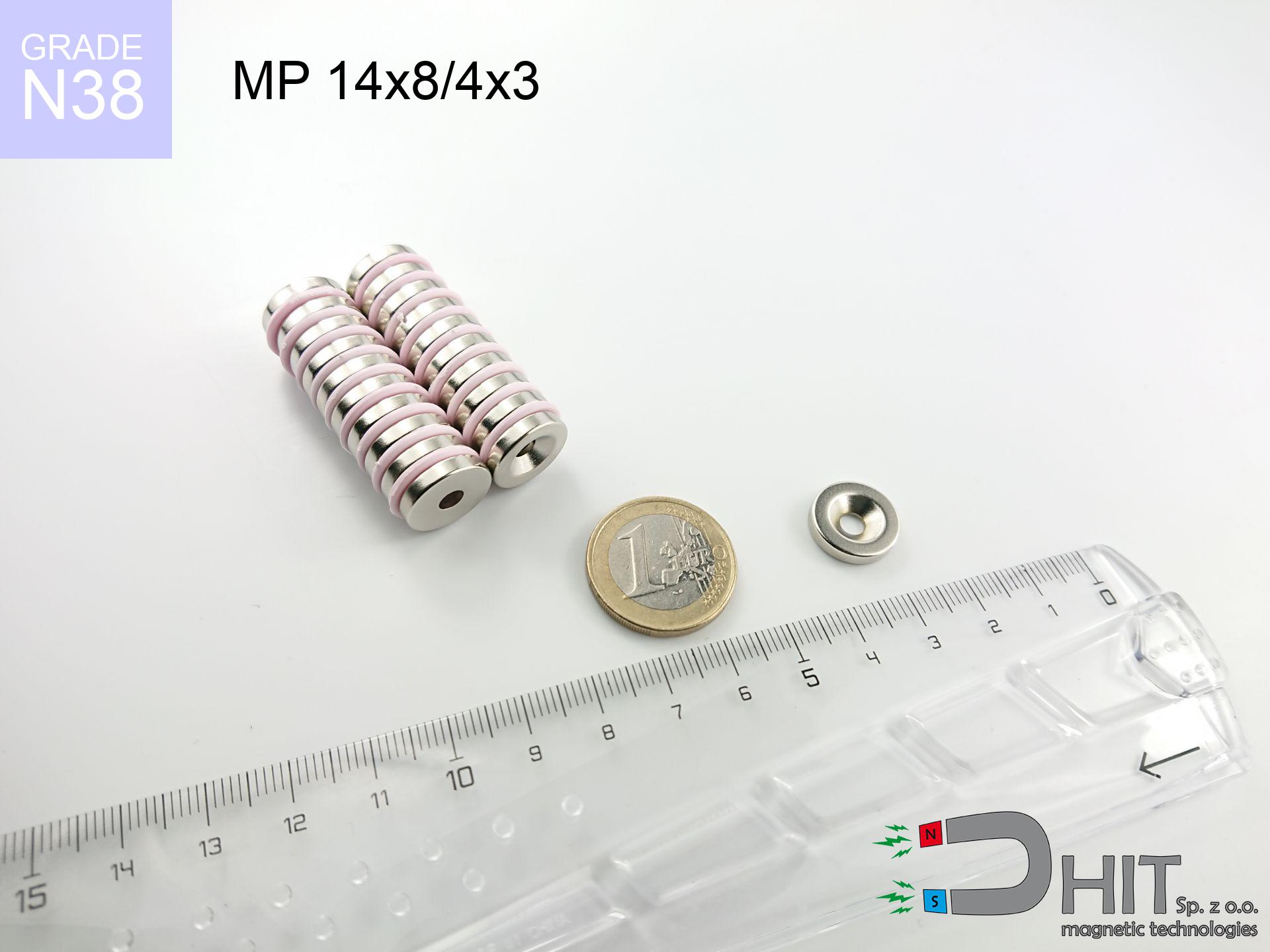SM 25x100 [2xM8] / N52 - magnetic separator
magnetic separator
Catalog no 130366
GTIN/EAN: 5906301813149
Diameter Ø
25 mm [±1 mm]
Height
100 mm [±1 mm]
Weight
360 g
Magnetic Flux
~ 8 500 Gauss [±5%]
319.80 ZŁ with VAT / pcs + price for transport
260.00 ZŁ net + 23% VAT / pcs
bulk discounts:
Need more?
Give us a call
+48 888 99 98 98
otherwise get in touch by means of
form
the contact section.
Parameters and structure of magnets can be analyzed on our
magnetic calculator.
Order by 14:00 and we’ll ship today!
Technical - SM 25x100 [2xM8] / N52 - magnetic separator
Specification / characteristics - SM 25x100 [2xM8] / N52 - magnetic separator
| properties | values |
|---|---|
| Cat. no. | 130366 |
| GTIN/EAN | 5906301813149 |
| Production/Distribution | Dhit sp. z o.o. |
| Country of origin | Poland / China / Germany |
| Customs code | 85059029 |
| Diameter Ø | 25 mm [±1 mm] |
| Height | 100 mm [±1 mm] |
| Weight | 360 g |
| Material Type | Stainless steel AISI 304 / A2 |
| Magnetic Flux | ~ 8 500 Gauss [±5%] |
| Size/Mount Quantity | M8x2 |
| Polarity | circumferential - 3 poles |
| Casing Tube Thickness | 1 mm |
| Manufacturing Tolerance | ±1 mm |
Magnetic properties of material N52
| properties | values | units |
|---|---|---|
| remenance Br [min. - max.] ? | 14.2-14.7 | kGs |
| remenance Br [min. - max.] ? | 1420-1470 | mT |
| coercivity bHc ? | 10.8-12.5 | kOe |
| coercivity bHc ? | 860-995 | kA/m |
| actual internal force iHc | ≥ 12 | kOe |
| actual internal force iHc | ≥ 955 | kA/m |
| energy density [min. - max.] ? | 48-53 | BH max MGOe |
| energy density [min. - max.] ? | 380-422 | BH max KJ/m |
| max. temperature ? | ≤ 80 | °C |
Physical properties of sintered neodymium magnets Nd2Fe14B at 20°C
| properties | values | units |
|---|---|---|
| Vickers hardness | ≥550 | Hv |
| Density | ≥7.4 | g/cm3 |
| Curie Temperature TC | 312 - 380 | °C |
| Curie Temperature TF | 593 - 716 | °F |
| Specific resistance | 150 | μΩ⋅cm |
| Bending strength | 250 | MPa |
| Compressive strength | 1000~1100 | MPa |
| Thermal expansion parallel (∥) to orientation (M) | (3-4) x 10-6 | °C-1 |
| Thermal expansion perpendicular (⊥) to orientation (M) | -(1-3) x 10-6 | °C-1 |
| Young's modulus | 1.7 x 104 | kg/mm² |
Table 1: Rod construction
SM 25x100 [2xM8] / N52
| Parameter | Value | Description / Unit |
|---|---|---|
| Diameter (Ø) | 25 | mm |
| Total length | 100 | mm (L) |
| Active length | 64 | mm |
| Section count | 2 | modules |
| Dead zone | 36 | mm (2x 18mm starter) |
| Weight (est.) | ~373 | g |
| Active area | 50 | cm² (Area) |
| Housing material | AISI 304 | 1.4301 (Inox) |
| Surface finish | Ra < 0.8 µm | Polished |
| Temp. class | 80°C | Standard (N) |
| Force loss (at max °C) | -12.8% | Reversible loss (physics) |
| Force (calculated) | 18.1 | kg (theor.) |
| Induction (surface) | ~8 500 | Gauss (Max) |
Chart 2: Field profile (2 sections)
Chart 3: Temperature performance
Material specification
| iron (Fe) | 64% – 68% |
| neodymium (Nd) | 29% – 32% |
| boron (B) | 1.1% – 1.2% |
| dysprosium (Dy) | 0.5% – 2.0% |
| coating (Ni-Cu-Ni) | < 0.05% |
Ecology and recycling (GPSR)
| recyclability (EoL) | 100% |
| recycled raw materials | ~10% (pre-cons) |
| carbon footprint | low / zredukowany |
| waste code (EWC) | 16 02 16 |
Other proposals
Pros as well as cons of Nd2Fe14B magnets.
Advantages
- They do not lose power, even over approximately 10 years – the decrease in lifting capacity is only ~1% (based on measurements),
- Neodymium magnets are distinguished by extremely resistant to demagnetization caused by magnetic disturbances,
- By using a smooth coating of nickel, the element presents an modern look,
- They show high magnetic induction at the operating surface, which affects their effectiveness,
- Neodymium magnets are characterized by very high magnetic induction on the magnet surface and can work (depending on the form) even at a temperature of 230°C or more...
- In view of the ability of free shaping and customization to custom needs, magnetic components can be created in a variety of shapes and sizes, which expands the range of possible applications,
- Fundamental importance in high-tech industry – they are used in computer drives, brushless drives, advanced medical instruments, as well as technologically advanced constructions.
- Relatively small size with high pulling force – neodymium magnets offer impressive pulling force in tiny dimensions, which makes them useful in small systems
Cons
- Susceptibility to cracking is one of their disadvantages. Upon strong impact they can fracture. We advise keeping them in a special holder, which not only protects them against impacts but also increases their durability
- Neodymium magnets demagnetize when exposed to high temperatures. After reaching 80°C, many of them experience permanent drop of power (a factor is the shape and dimensions of the magnet). We offer magnets specially adapted to work at temperatures up to 230°C marked [AH], which are extremely resistant to heat
- When exposed to humidity, magnets usually rust. To use them in conditions outside, it is recommended to use protective magnets, such as magnets in rubber or plastics, which secure oxidation and corrosion.
- We suggest cover - magnetic mount, due to difficulties in creating nuts inside the magnet and complex forms.
- Potential hazard related to microscopic parts of magnets can be dangerous, in case of ingestion, which becomes key in the context of child safety. It is also worth noting that small elements of these magnets are able to be problematic in diagnostics medical after entering the body.
- Higher cost of purchase is one of the disadvantages compared to ceramic magnets, especially in budget applications
Lifting parameters
Highest magnetic holding force – what it depends on?
- with the use of a sheet made of special test steel, guaranteeing maximum field concentration
- possessing a massiveness of min. 10 mm to avoid saturation
- characterized by lack of roughness
- under conditions of ideal adhesion (metal-to-metal)
- under perpendicular application of breakaway force (90-degree angle)
- at ambient temperature approx. 20 degrees Celsius
Key elements affecting lifting force
- Space between surfaces – even a fraction of a millimeter of separation (caused e.g. by varnish or unevenness) drastically reduces the magnet efficiency, often by half at just 0.5 mm.
- Angle of force application – highest force is available only during pulling at a 90° angle. The shear force of the magnet along the plate is usually several times lower (approx. 1/5 of the lifting capacity).
- Steel thickness – insufficiently thick plate causes magnetic saturation, causing part of the flux to be wasted into the air.
- Metal type – not every steel reacts the same. Alloy additives weaken the attraction effect.
- Surface condition – smooth surfaces guarantee perfect abutment, which improves force. Rough surfaces weaken the grip.
- Thermal conditions – neodymium magnets have a sensitivity to temperature. At higher temperatures they are weaker, and in frost gain strength (up to a certain limit).
Holding force was checked on the plate surface of 20 mm thickness, when the force acted perpendicularly, however under shearing force the load capacity is reduced by as much as 5 times. Additionally, even a small distance between the magnet’s surface and the plate lowers the load capacity.
Safety rules for work with neodymium magnets
Implant safety
Individuals with a ICD must keep an absolute distance from magnets. The magnetism can stop the operation of the life-saving device.
Sensitization to coating
Studies show that nickel (the usual finish) is a common allergen. For allergy sufferers, avoid direct skin contact and opt for versions in plastic housing.
Risk of cracking
Neodymium magnets are ceramic materials, meaning they are prone to chipping. Collision of two magnets will cause them shattering into small pieces.
Impact on smartphones
Navigation devices and smartphones are highly sensitive to magnetic fields. Direct contact with a strong magnet can permanently damage the sensors in your phone.
Choking Hazard
NdFeB magnets are not toys. Eating a few magnets may result in them attracting across intestines, which poses a severe health hazard and necessitates immediate surgery.
Powerful field
Before use, read the rules. Sudden snapping can destroy the magnet or injure your hand. Be predictive.
Crushing risk
Watch your fingers. Two powerful magnets will join immediately with a force of several hundred kilograms, destroying anything in their path. Be careful!
Cards and drives
Do not bring magnets close to a purse, laptop, or screen. The magnetism can destroy these devices and erase data from cards.
Power loss in heat
Regular neodymium magnets (grade N) lose power when the temperature exceeds 80°C. This process is irreversible.
Do not drill into magnets
Mechanical processing of NdFeB material poses a fire risk. Magnetic powder oxidizes rapidly with oxygen and is hard to extinguish.

![Separation magnetic rod SM 25x100 [2xM8] / N52 Separation magnetic rod SM 25x100 [2xM8] / N52](https://cdn3.dhit.pl/graphics/banners/magnet.webp)
![SM 25x100 [2xM8] / N52 - magnetic separator](https://cdn3.dhit.pl/graphics/products/sm-25x100-2xm8-fin.jpg)



![BM 450x180x70 [4x M8] - magnetic beam BM 450x180x70 [4x M8] - magnetic beam](https://cdn3.dhit.pl/graphics/products/bm-450x180x70-4x-m8-duh.jpg)

